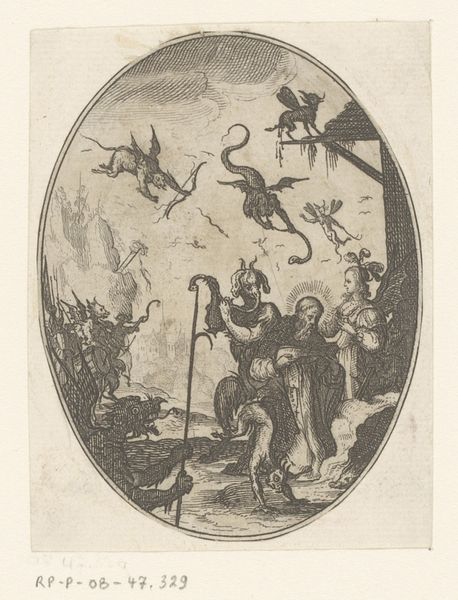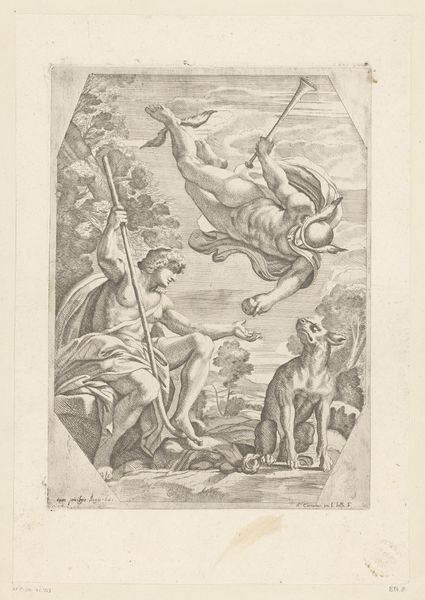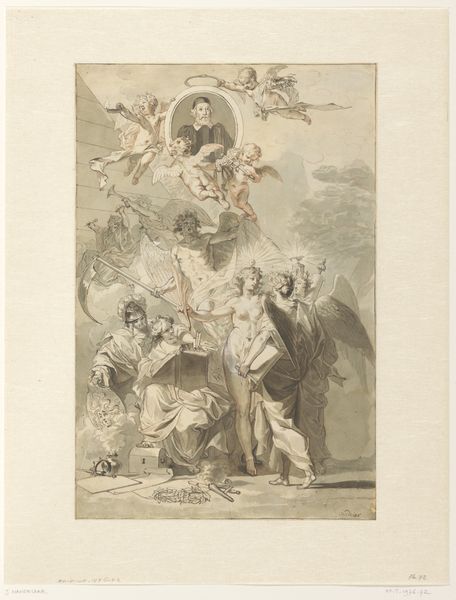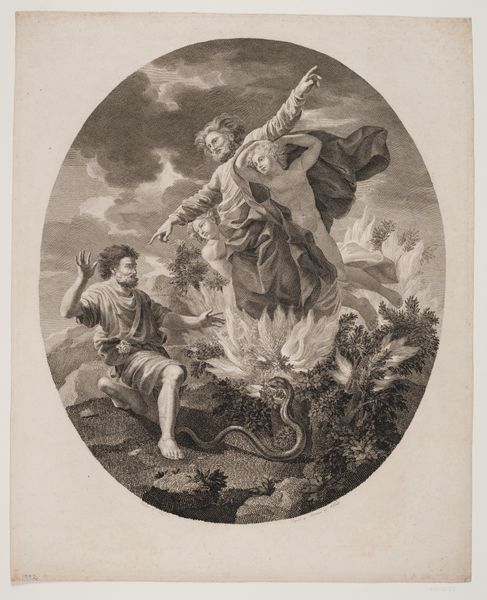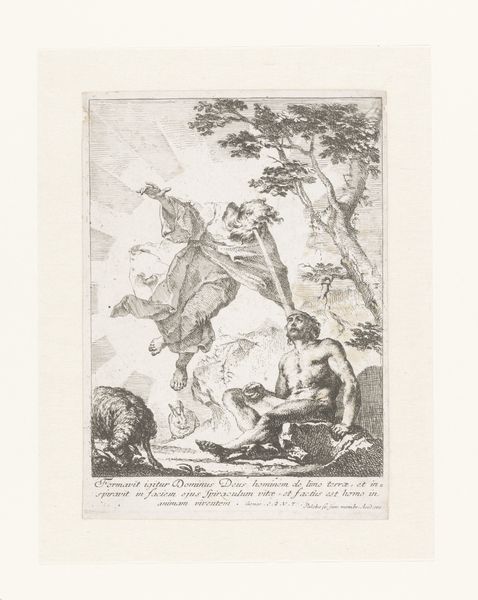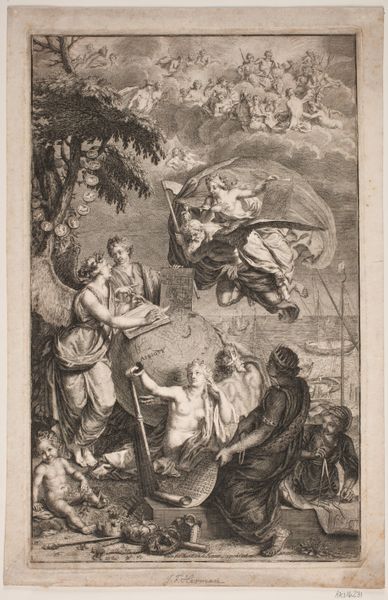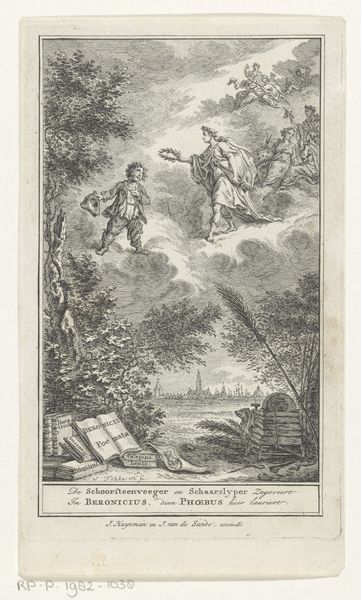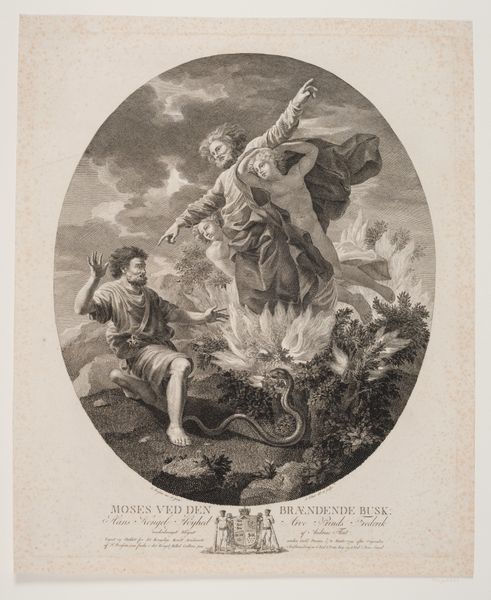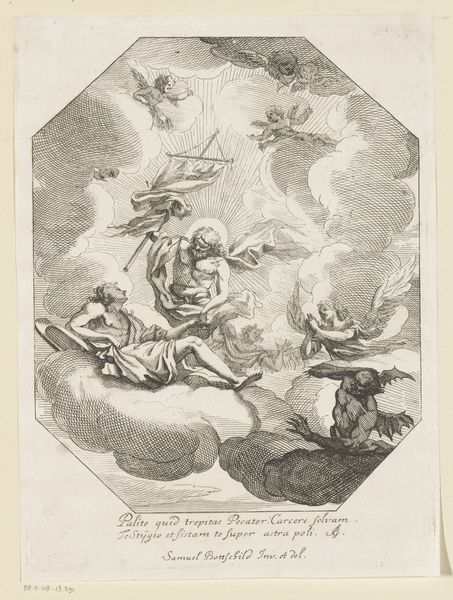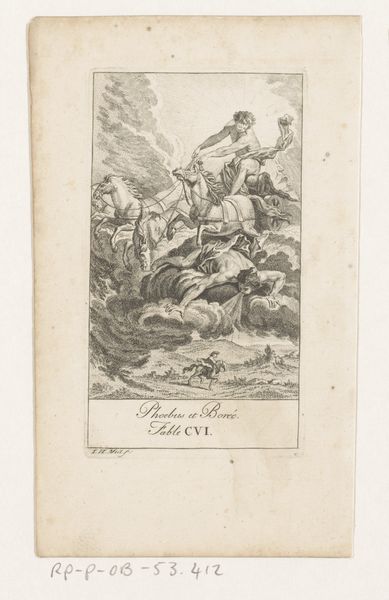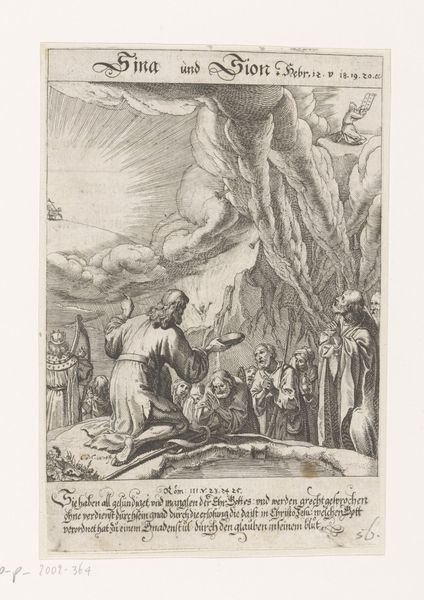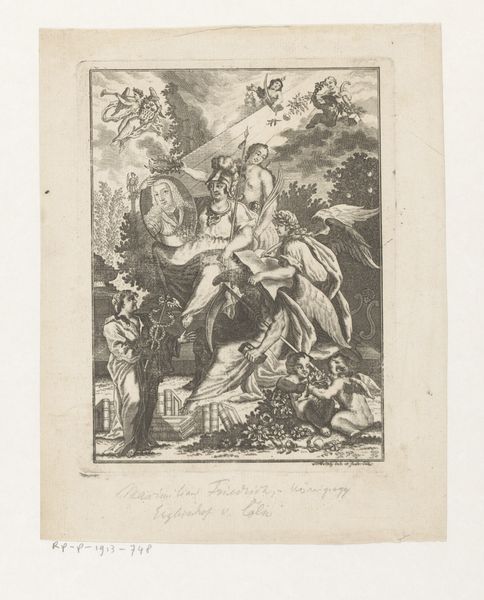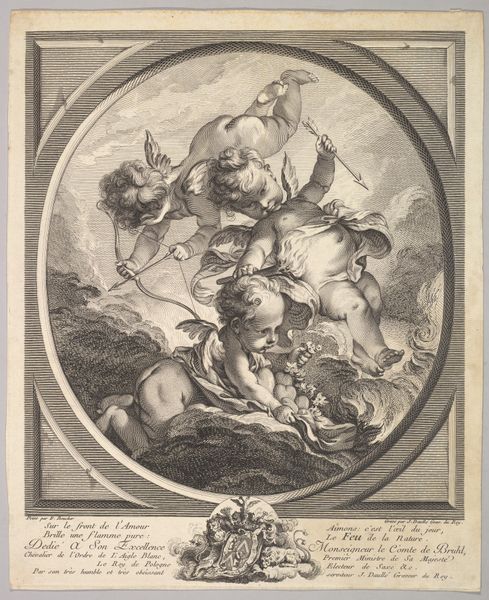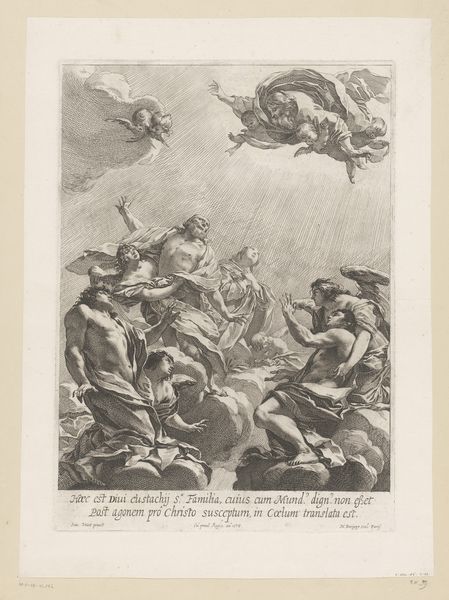
Mentor gooit Telemachus van een rots en springt hem achterna 1719 - 1775
0:00
0:00
drawing, painting, paper, watercolor, ink
#
drawing
#
water colours
#
painting
#
landscape
#
figuration
#
paper
#
watercolor
#
ink
#
coloured pencil
#
history-painting
Dimensions: height 246 mm, width 169 mm
Copyright: Rijks Museum: Open Domain
Curator: Rienk Keyert, active around the turn of the 18th century, rendered this lively scene entitled "Mentor throws Telemachus from a rock and jumps after him." It’s an ink and watercolour drawing on paper currently held at the Rijksmuseum. What's your initial read? Editor: Violent! The title really spells it out, doesn’t it? It feels both dynamic and precarious, this sense of imminent danger, captured with what appears like coloured pencils and watercolour. A sort of orchestrated chaos. Curator: Absolutely. The image pulls us directly into a pivotal moment. We see Mentor, the older figure, almost airborne, hurtling towards Telemachus, who’s already mid-fall into the churning water. Keyert really uses symbolism effectively – the high ground, representing authority perhaps, immediately surrendered for an act that could be interpreted as both protective and aggressive. Editor: The context is crucial. This illustrates a moment from Fénelon's "Telemachus," a text heavy with political commentary disguised as classical myth. Mentor is, of course, Athena in disguise, guiding the young Telemachus. I find it compelling that the narrative revolves around the manipulation—whether benevolent or not—of a young person's destiny by a powerful figure. We're shown the very act of instruction in progress, as literally embodied as the image suggests. Curator: The historical context adds significant depth. Consider the role of mentors in transmitting values and ideals across generations, especially during periods of social upheaval. In visual traditions, such lessons could signal resistance to contemporary norms, as such wisdom figures can transcend periodization, in effect becoming cultural keystones for collective identities. Editor: Indeed. And the somewhat muted color palette almost domesticates the drama. It feels both heroic and somehow unsettlingly intimate—this forceful intervention. Is Keyert celebrating authority, or questioning its methods? Given that it's watercolour and ink on paper, a relatively common medium for the time, perhaps that says something, too. Who was the piece created for? Who was meant to see it? Curator: Those are compelling questions. It’s a reminder of art’s embeddedness within the complexities of history. Keyert has certainly prompted thought and offered much in terms of sustained insight and inquiry. Editor: A turbulent testament to the ongoing negotiations between power and agency.
Comments
No comments
Be the first to comment and join the conversation on the ultimate creative platform.
